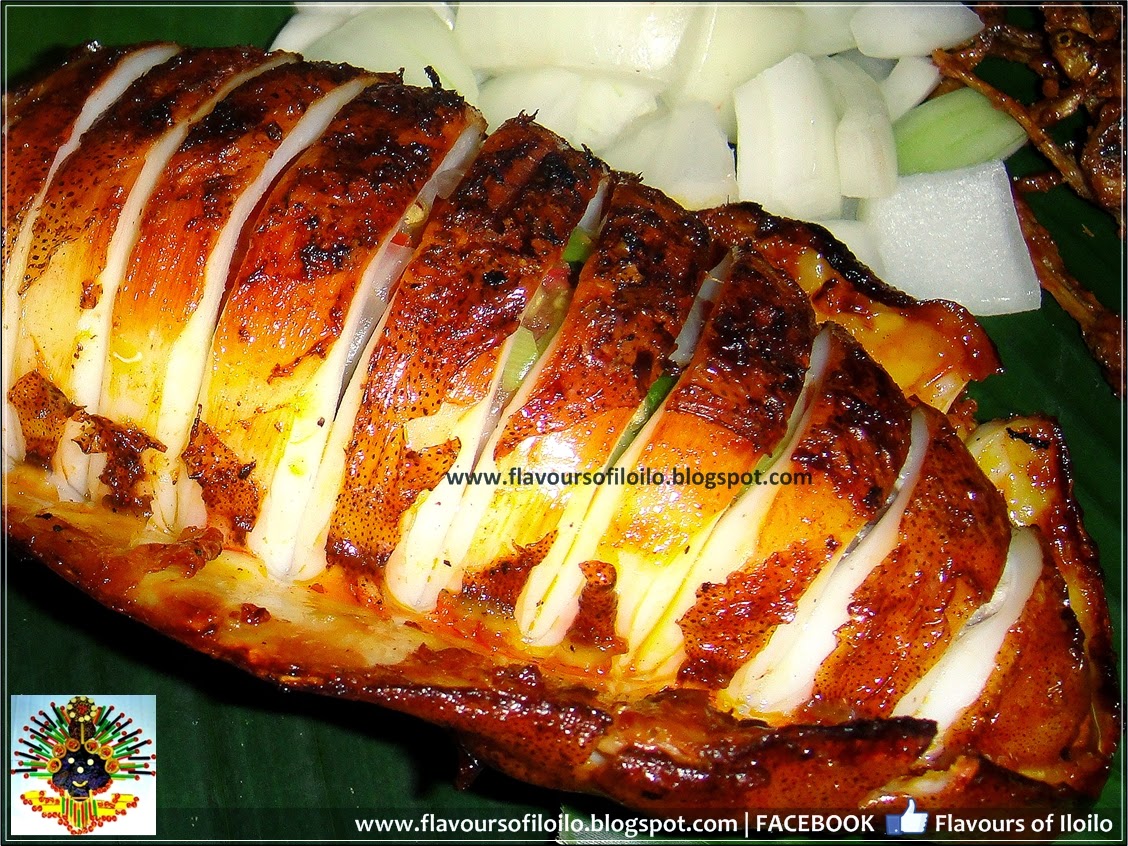Grilled stuffed squid is one of the most inviting grilled seafood there is. Be it in a seafood restaurant serving grilled specialties or just in the comfort of your home, the gastronomic lure of inihaw na pusit is too tempting to resist. The preparation is just simple - just stuff the squid with tomatoes and onions , add seasoning and then grill until ready. The trickiest part when cooking squid in general is how to avoid making it rubbery as overcooking it will make it that way.
Here's a basic Grilled Stuffed Squid recipe that you can make easily at home.
Ingredients
- Squid, medium to large size (just big enough to be stuffed)
- Tomato, diced/chopped (enough to stuff the squid)
- White Onion, diced/chopped (enough to stuff the squid)
- Onion leaves
- Salt
- Black pepper
Dip
- Calamansi
- Tomatoes
- Onions
- Chilis
- Vinegar
- Soy sauce
- Sugar
Procedure
- Clean the squid, inside out. Remove the ink sac (you can use this to make your adobong pusit more black) and other entrails.
- Combine salt and pepper (and other seasoning that suit your taste like chili powder if you wan ta kick) then let the squid "bathe" in the mixture.
- In a separate container, mix tomato, onion and onion leaves. Season with salt and pepper.
- Insert the filling in the squid and make sure it is fully filled.
- Grill the squid for 4 to 6 minutes or until the front and backsides are cooked. Length of grilling depends on the size of your squid. Do not overcook.
- Serve with the dipping sauce - just combine the dip ingredients you can add or take away some of the ingredients to suit your taste.



